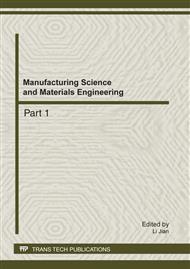p.221
p.225
p.229
p.237
p.241
p.246
p.252
p.258
p.267
Development of the Natural Vegetable Gum Drilling and Completion Fluids System for Industrial Intelligent Application
Abstract:
To ensure the fluids selected to drill and complete the well would simplify the operation for the oil and gas development in the petroleum industry, a natural vegetable gum drilling and completion fluids system is developed for the industrial intelligent application. As the system combines the advantage of the drilling fluid and completion fluid, it need not change the two different fluids during the operation, which is beneficial to the intelligent operation. In addition, the formulation of the proposed system has mainly taken the environment factor into consideration as the environmental protection has become main concern before the implementation of the oil and gas exploration. An extensive laboratory work of the natural vegetable gum drilling and completion fluids system is carried out, including the formulation study of the detailed system and the corresponding performance evaluation. In the system, the vegetable gum is chosen as raw material and TLJ-1 is optimally selected as the major treatment agent in the natural vegetable gum drilling and completion fluid system. The LV-CMC, polyglycol and QS-2 are taken as the auxiliary treatment agents for the system. And the three formulations, i. e. the solids-free fluid system, the low-solids fluid system and the weighting fluid system have been presented in this paper. The laboratory analysis has demonstrated that the prosperities of the system are proper for the industrial intellectual application, with the temperature resistance capability of 315 ℉.
Info:
Periodical:
Pages:
241-245
Citation:
Online since:
January 2012
Authors:
Price:
Сopyright:
© 2012 Trans Tech Publications Ltd. All Rights Reserved
Share:
Citation:


